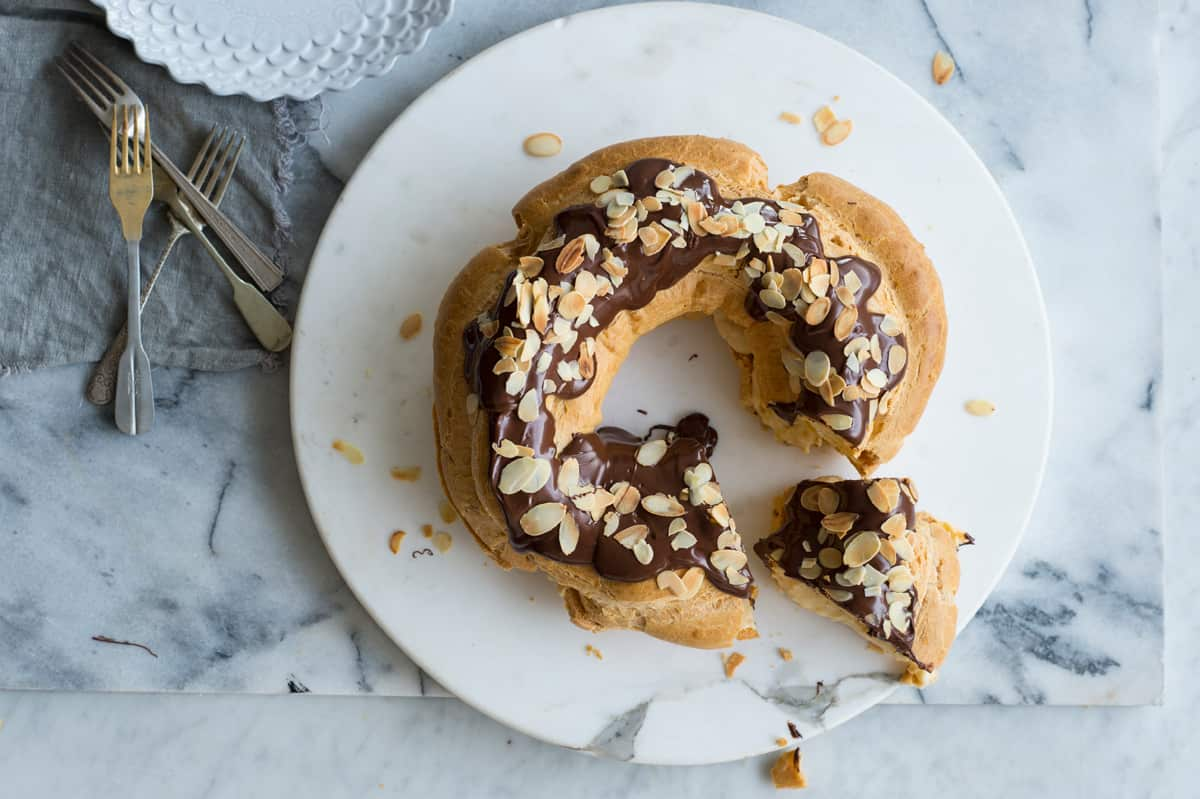Pâte à choux loosely translates as ‘cabbage dough’ – a reference to the way a baking tray of lined up choux pastry puffs resembles a cabbage patch. The taste and texture sensation of choux pastry, though, is closer to heavenly than to a cabbage!
It is believed that choux pastry was originally created in the 16th century by a chef working for the Italian-born French queen Catherine de’ Medici. But this unique pastry wasn’t much celebrated until the famous pastry chef Antonin (Marie-Antoine) Carême used it to create the éclair and croquembouche some 200 years later. And very much celebrated it now is!
Although it is classified as a pastry, the method for making it is quite different to other pastries, such as shortcrust or puff. Not only does butter play a comparatively lesser role in choux pastry, but heat – a major enemy of shortcrust and puff-type pastries – is required and the ingredients are beaten together instead of rubbing and careful mixing. On top of this, unlike all others, choux pastry needs no rolling and is usually spooned or piped onto trays for baking.
This makes choux pastry the perfect pastry to fill, as an air pocket forms in the centre as it bakes and puffs. And so it forms the basis of such irresistibles as éclairs, gougères, profiteroles, Paris-Brest and the spectacular croquembouche, just to mention a few.
There are three main things to keep in mind when making choux pastry to ensure success:
1. Measure your ingredients accurately, as the key to good choux pastry is a balance between the major ingredients of flour, water and eggs. If there is an imbalance between these, there is a great chance your choux won’t puff, become crisp or turn a golden brown colour.
2. Add the egg gradually. The amount of egg needed will vary and is determined by how much can be absorbed by the flour (which can vary slightly from batch to batch). If too much egg is added or if it is added too quickly, the consistency of the choux pastry will be affected, and in turn its ability to rise. Similarly, if not enough egg is incorporated, the choux pastry won’t puff and it will be dense inside. This is because it is the moisture in the egg that is converted to steam in the heat of the oven and that, in turn, creates the air pocket inside. So the more egg, the more the mixture will puff.
3. Oven temperature is important. If the oven temperature is too low or if the oven door is opened for too long and valuable heat is lost during baking, your choux pastry won’t rise as well. The same applies if you don’t bake it for long enough.
Do all of this correctly and you will have choux pastry that may look like rows of little cabbages in the oven, but will feel like heaven as you bite into it.
Anneka's choux recipes

Source: Alan Benson

Source: Alan Benson

Source: Alan Benson

Source: Alan Benson

Source: Alan Benson

Source: Alan Benson

Source: Alan Benson
Photography by Alan Benson. Styling by Sarah O’Brien. Food preparation by Kerry Ray.

